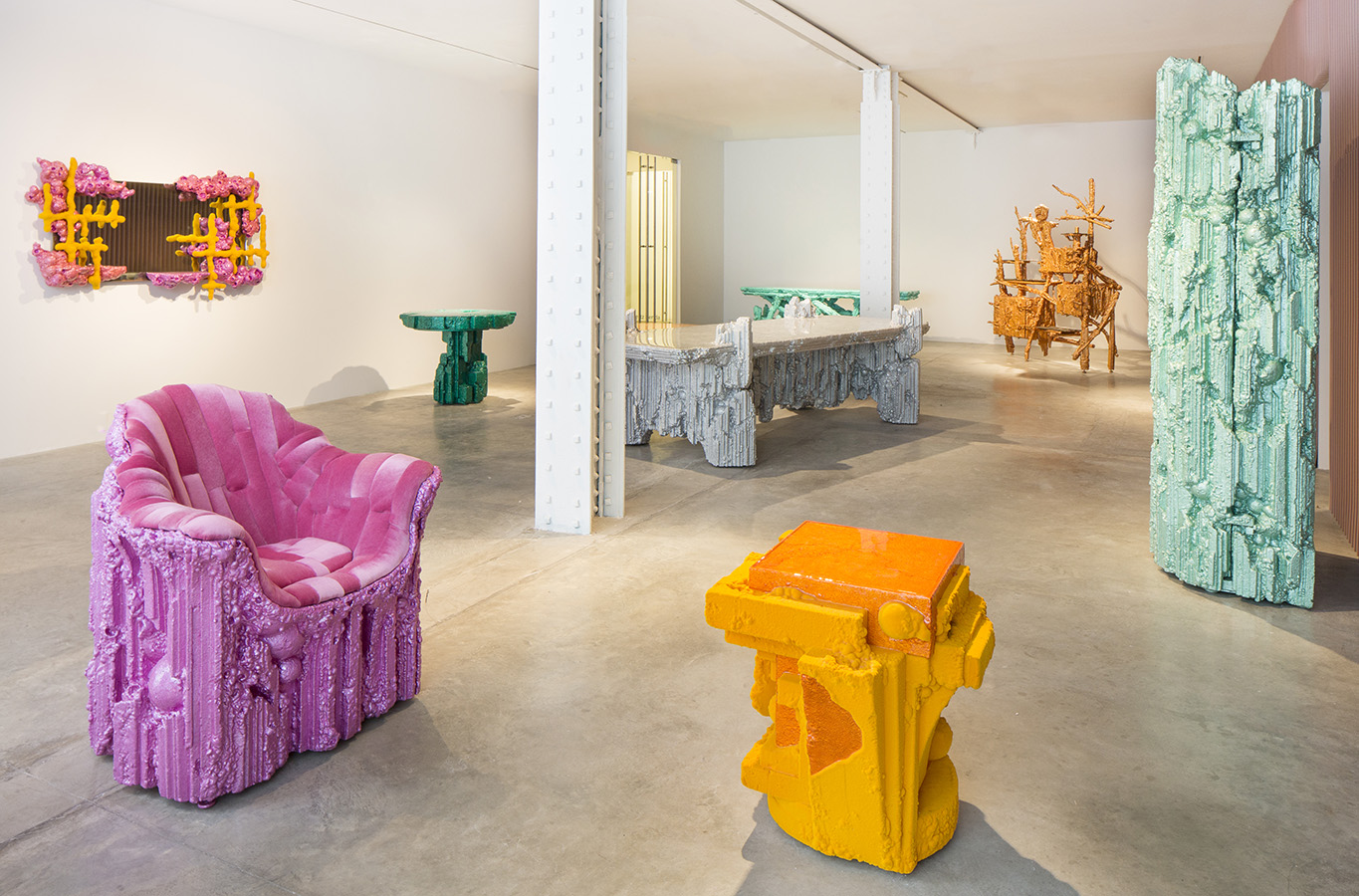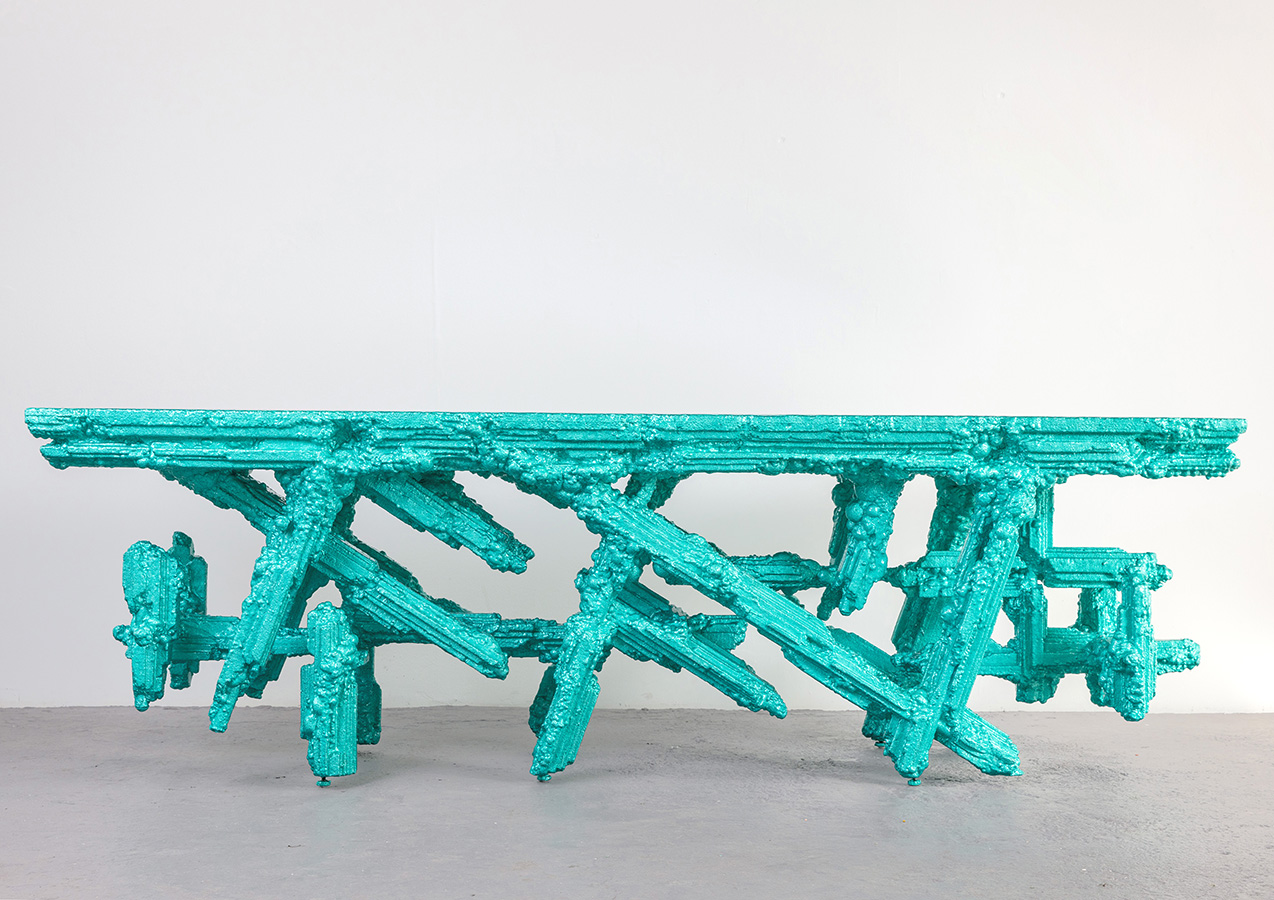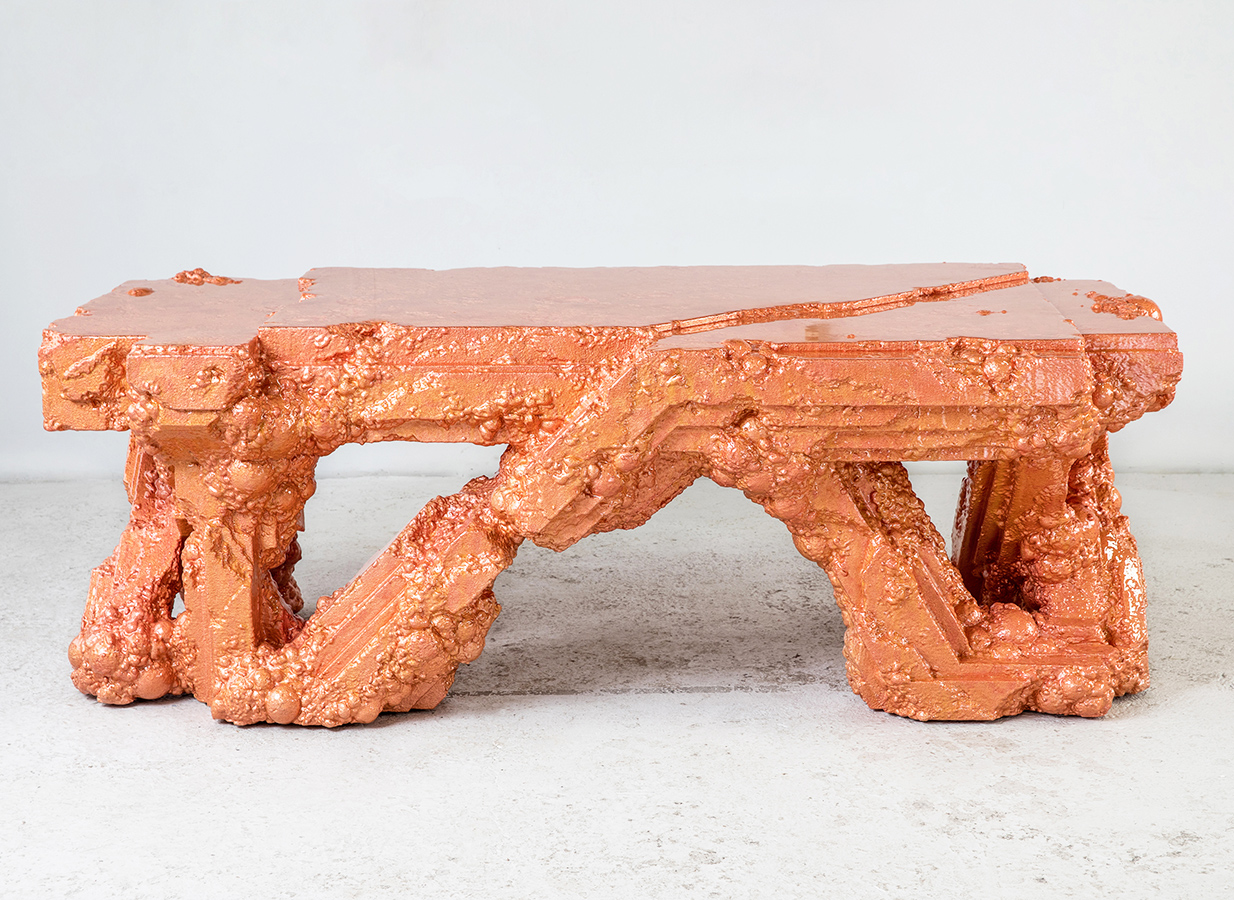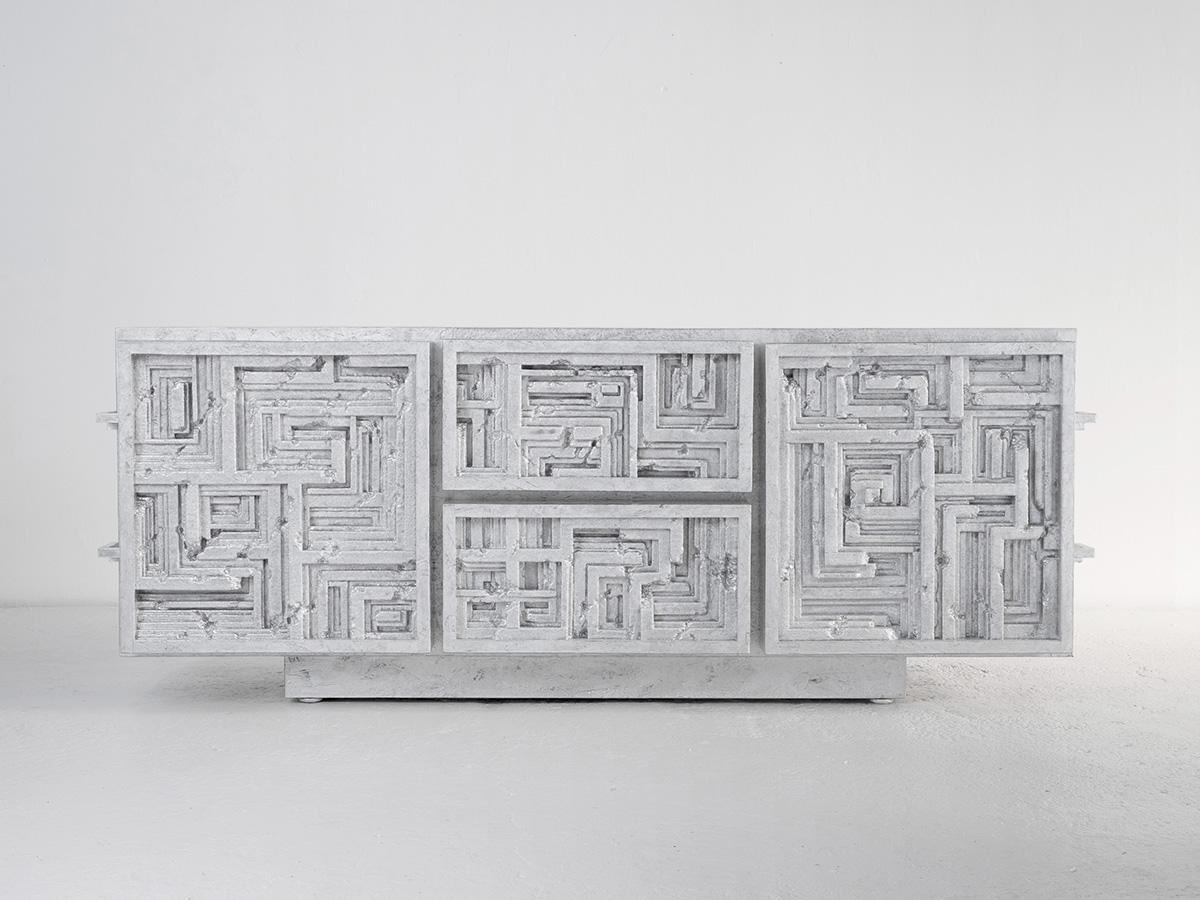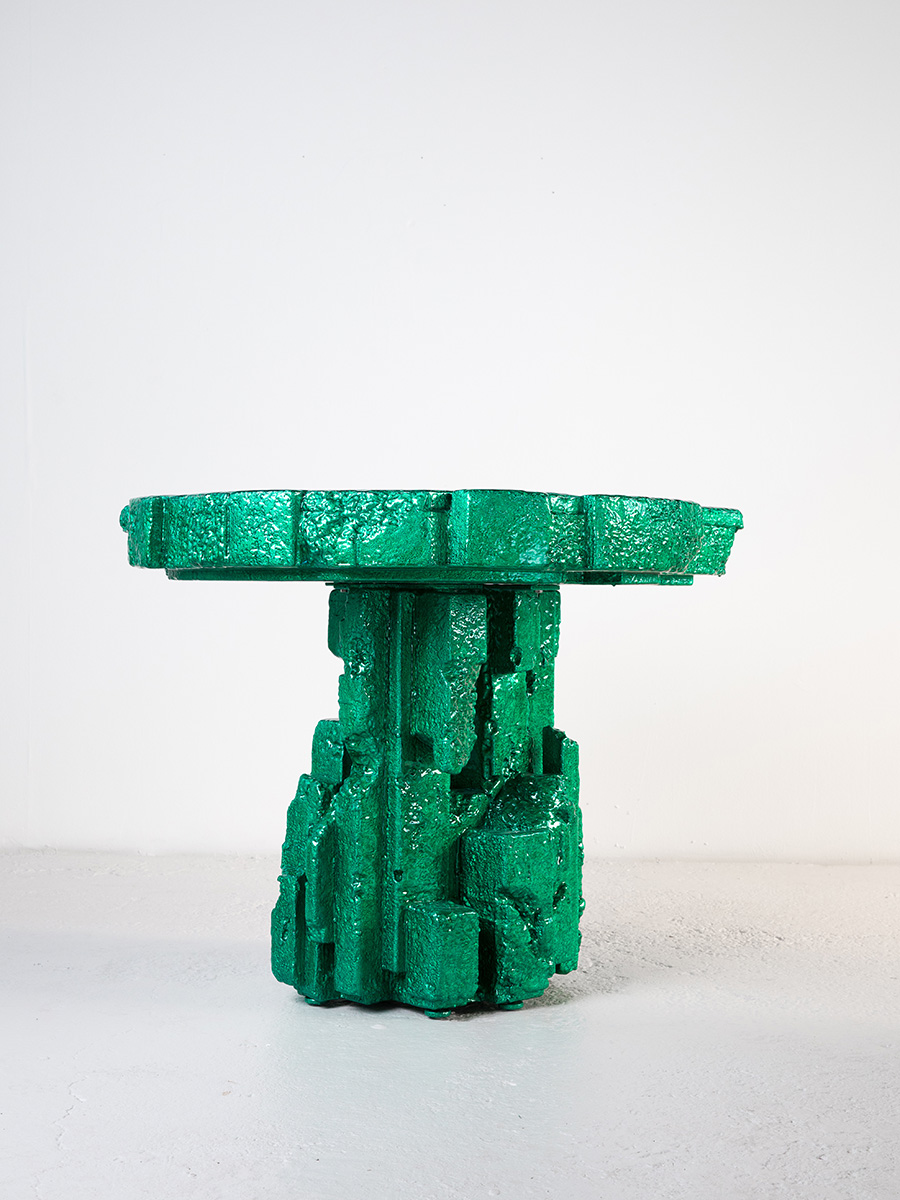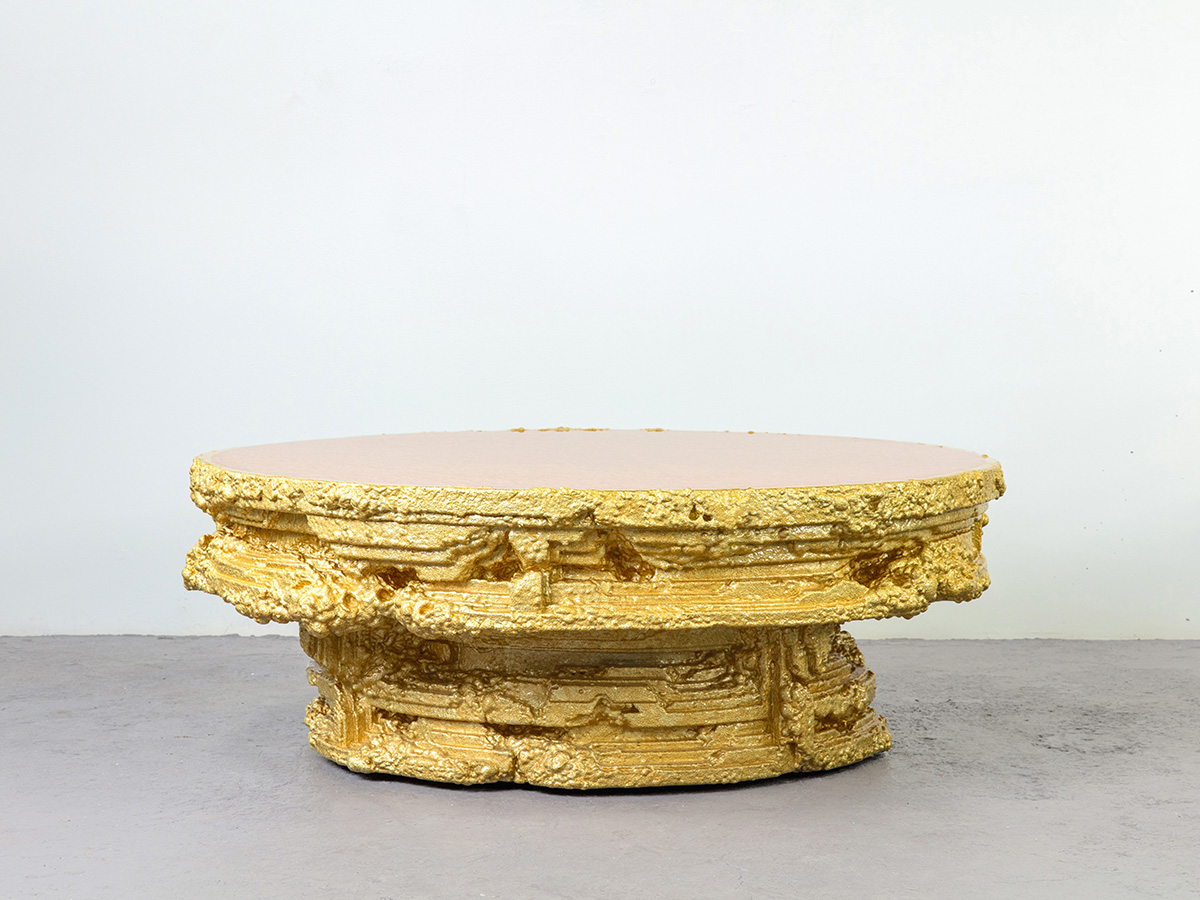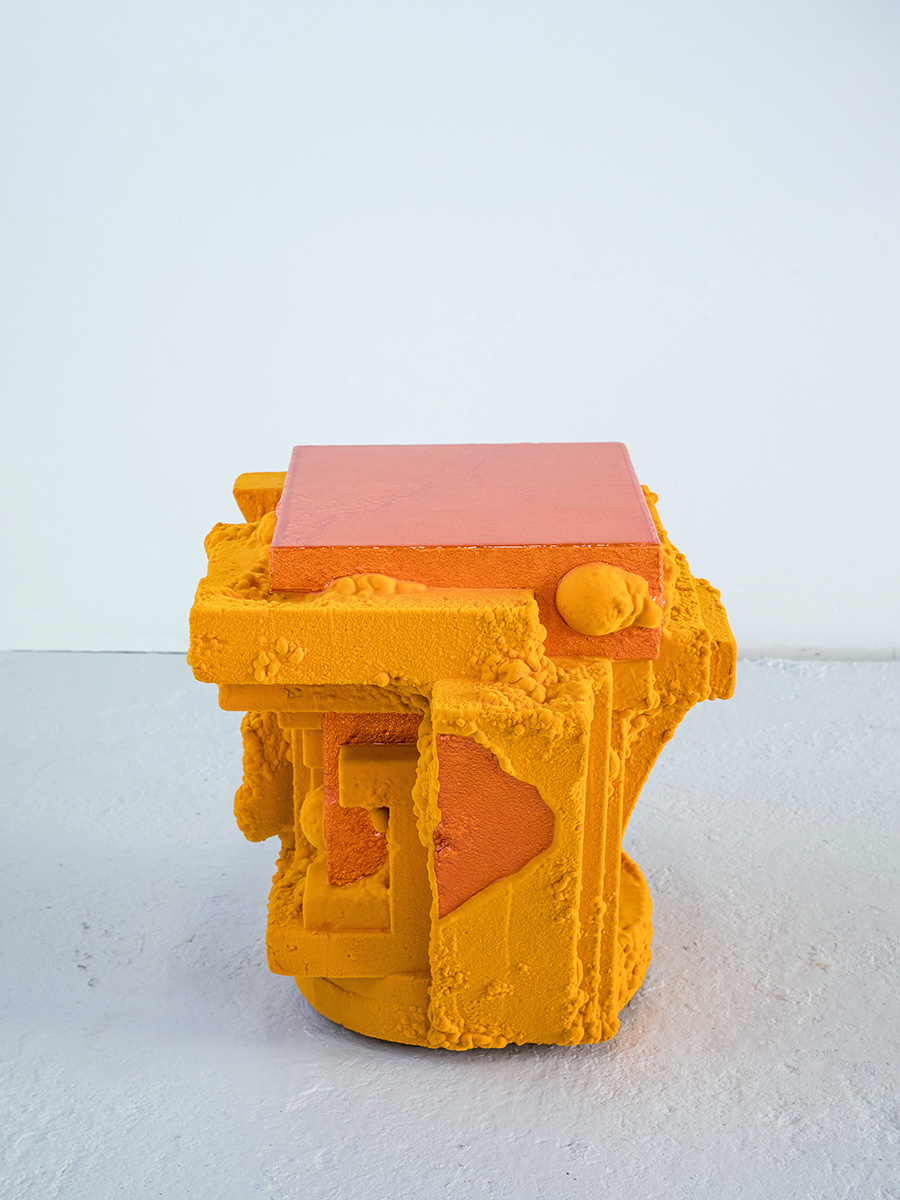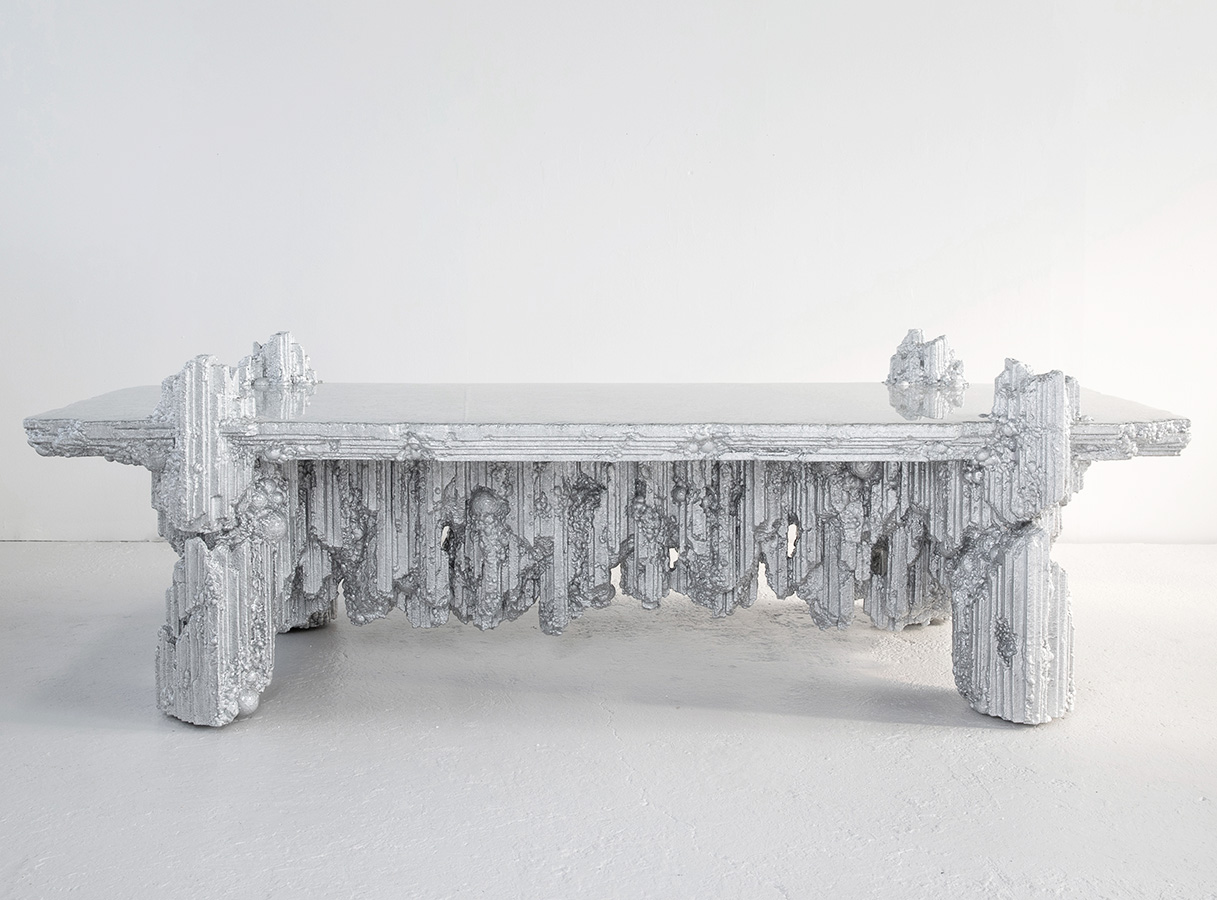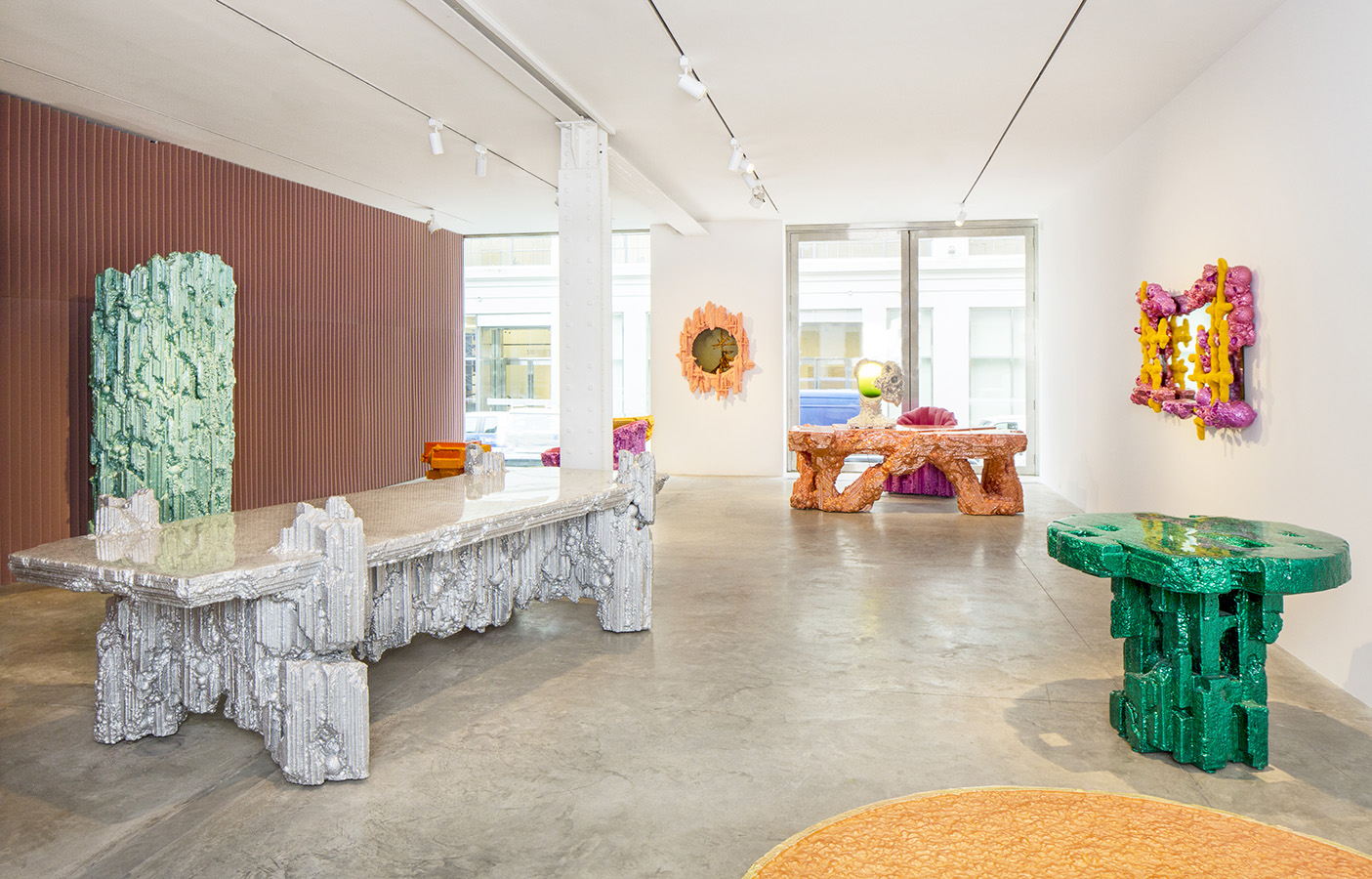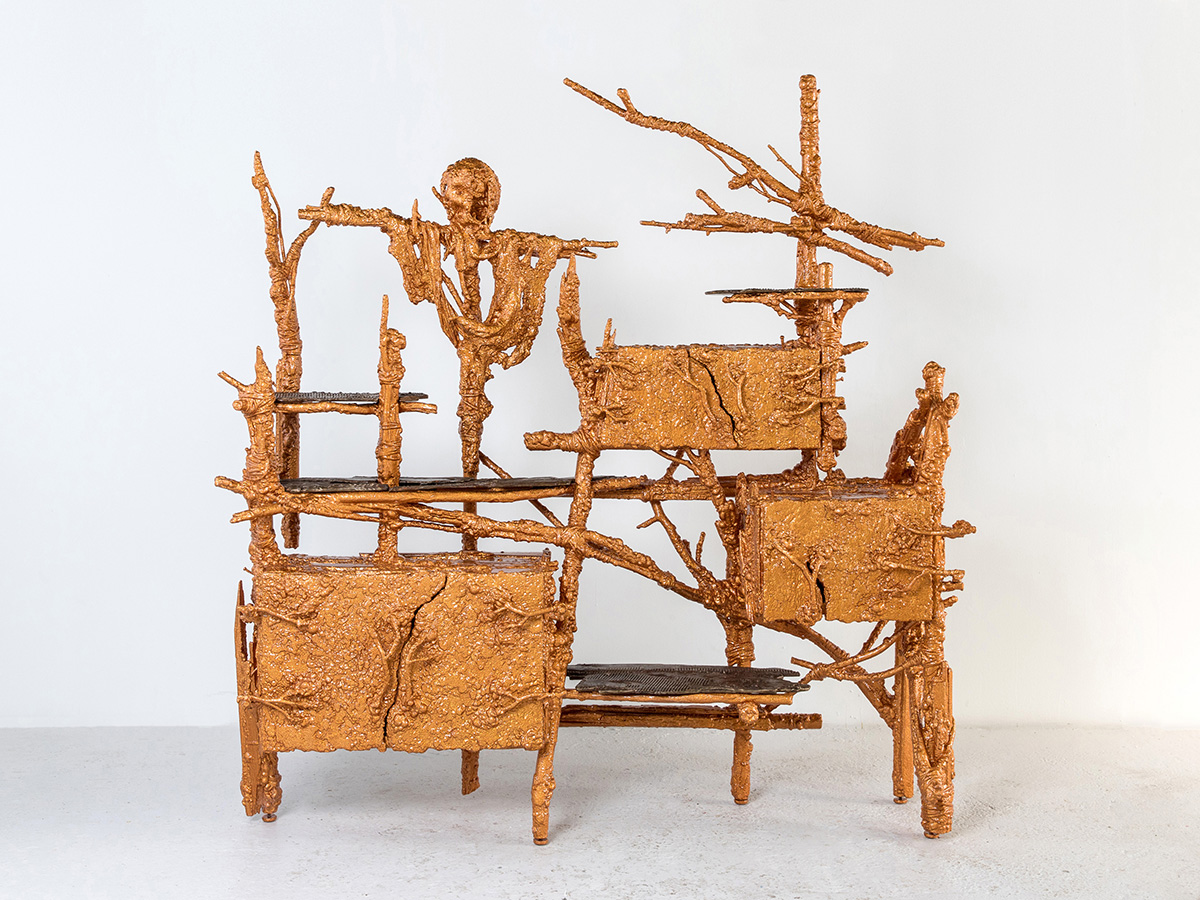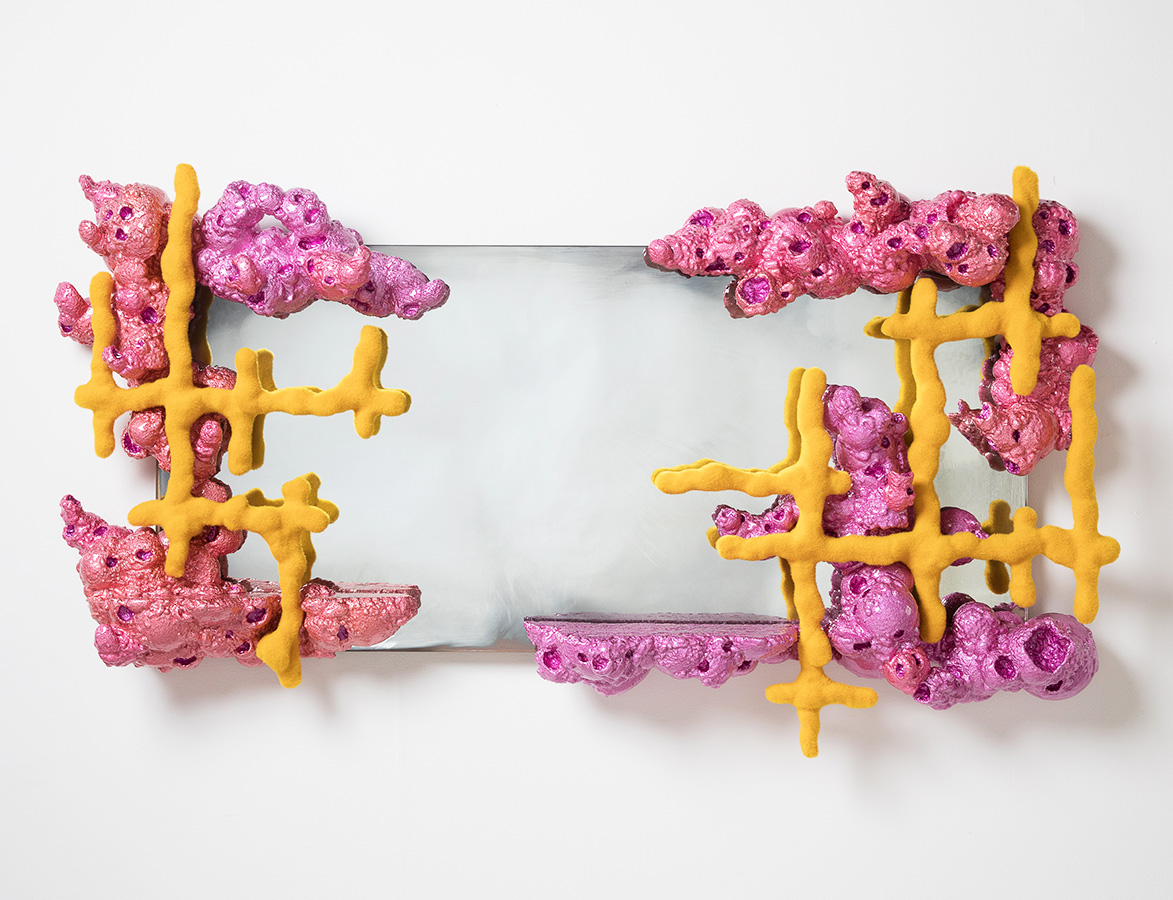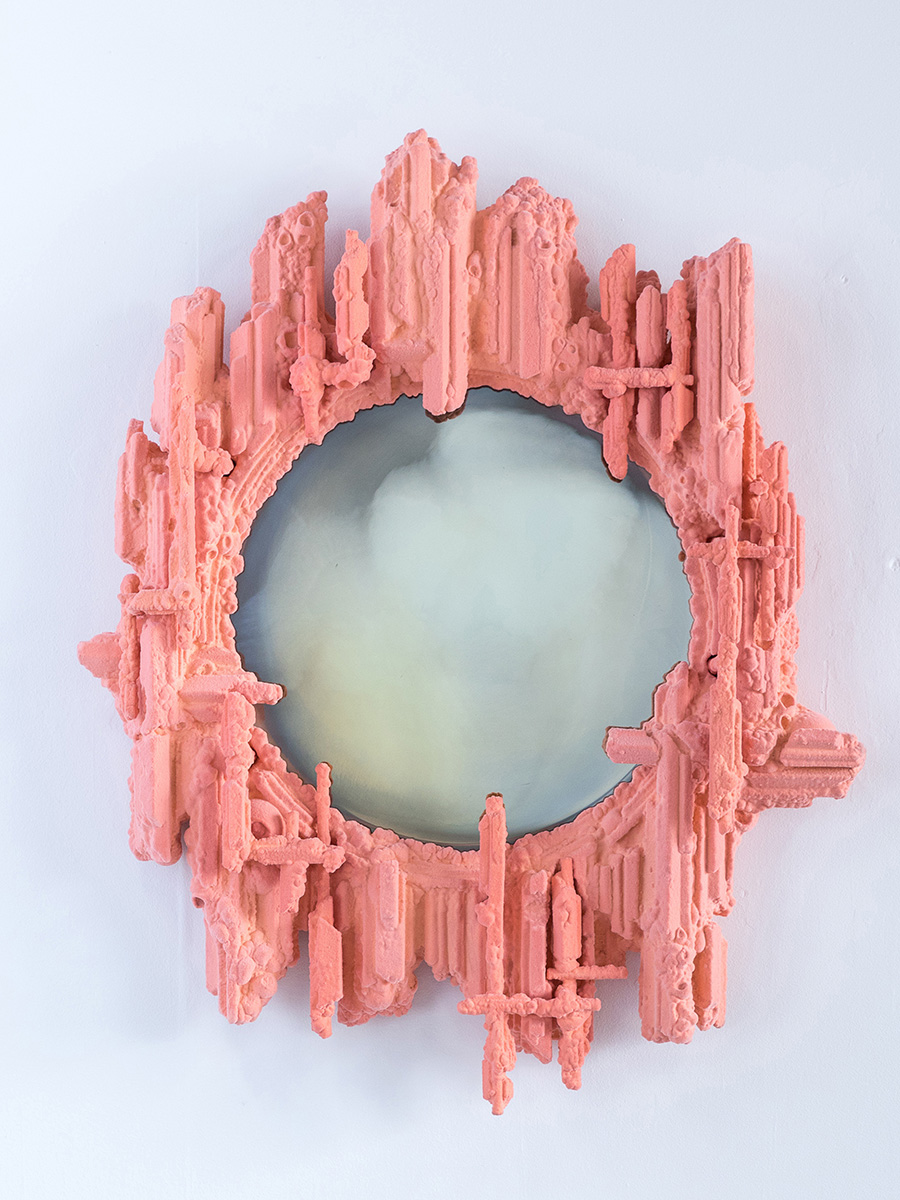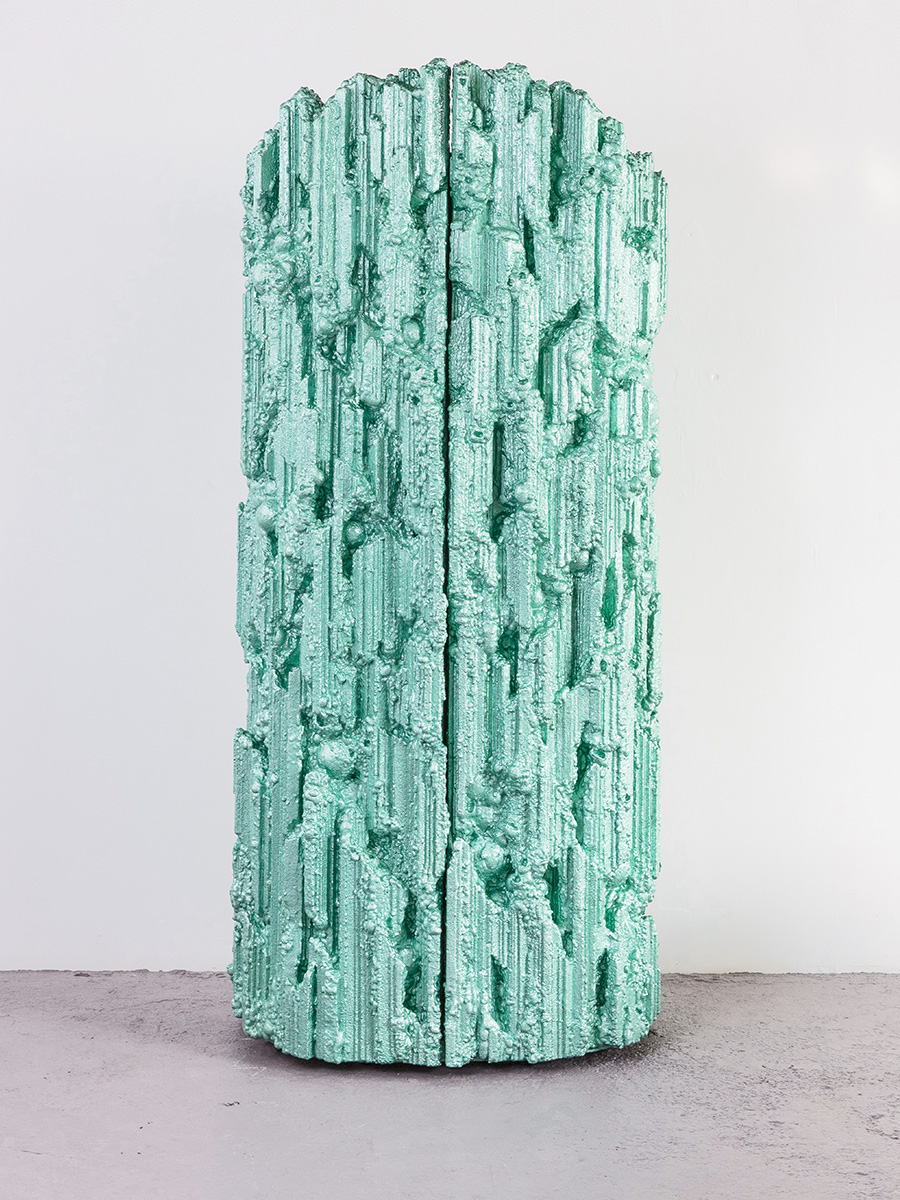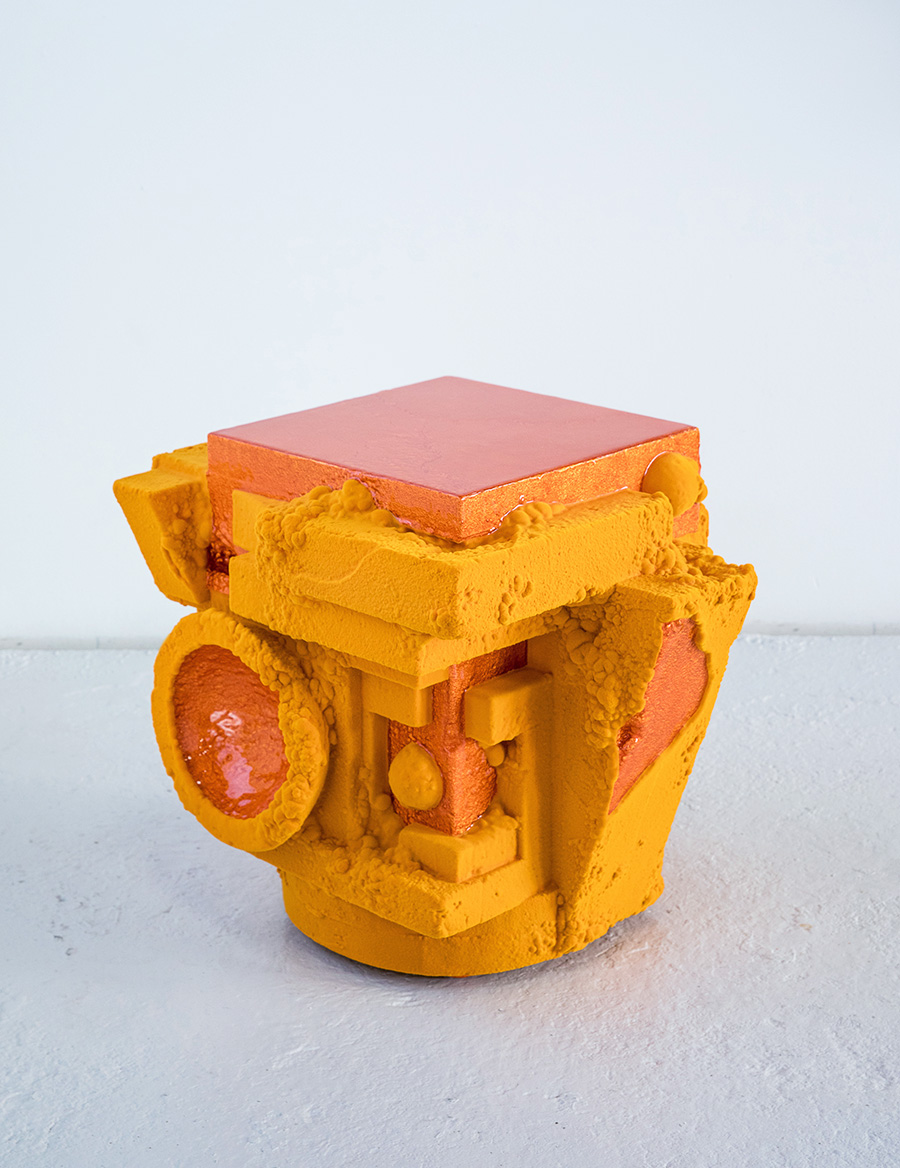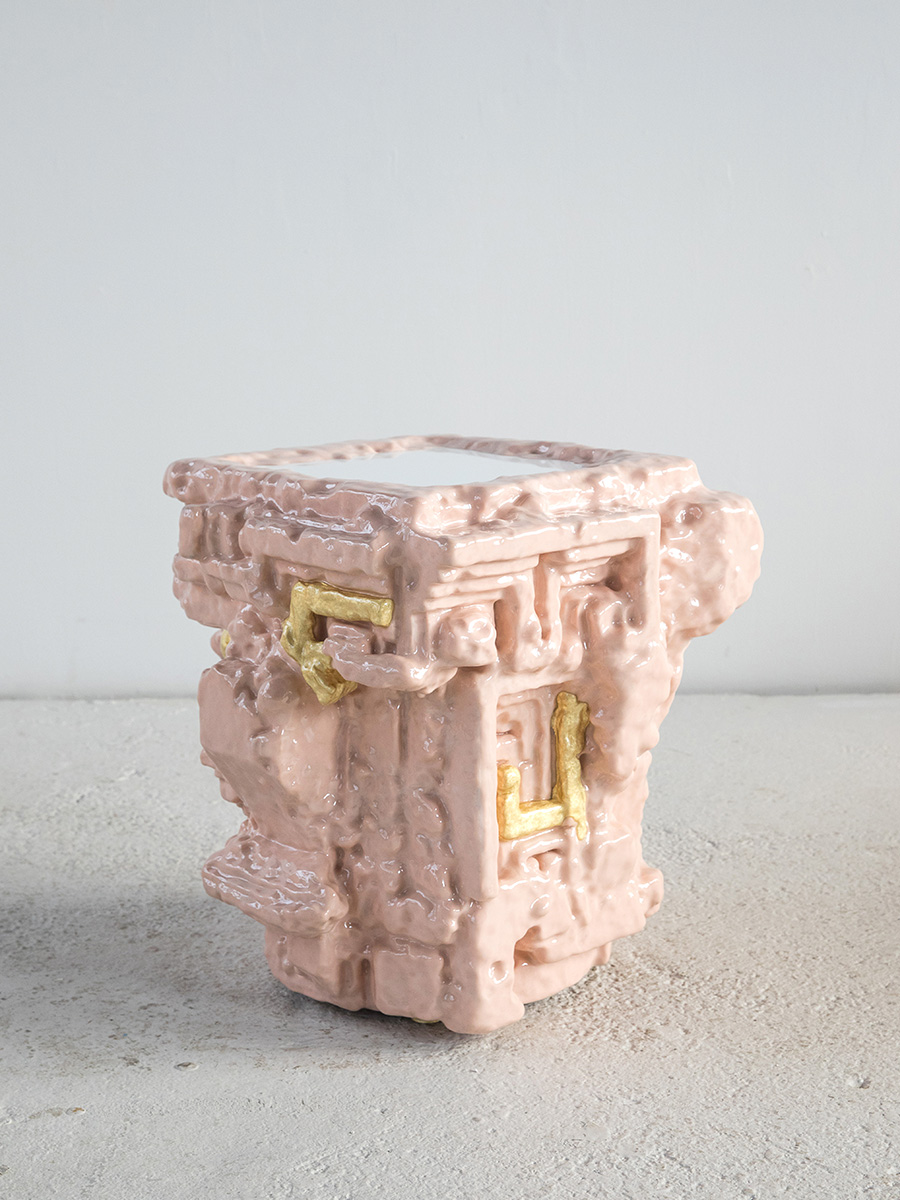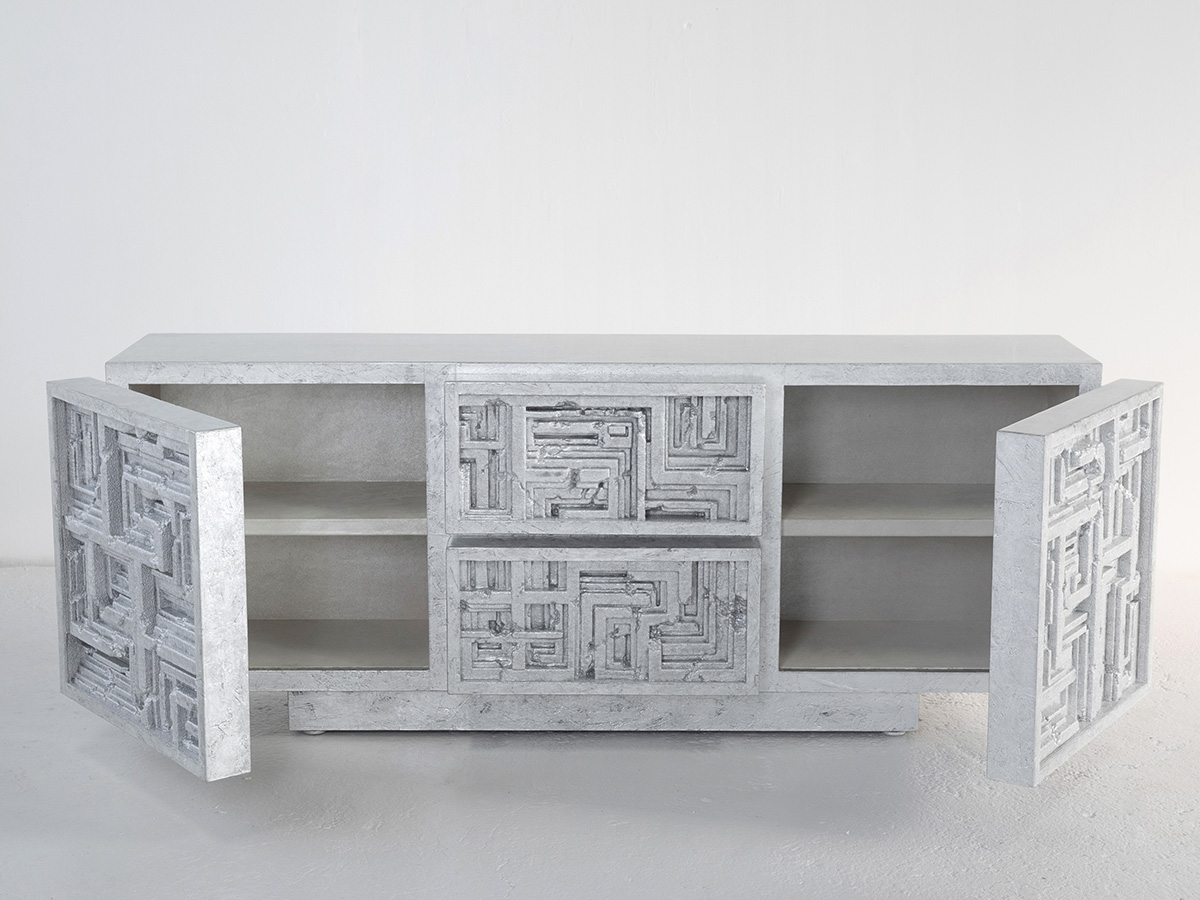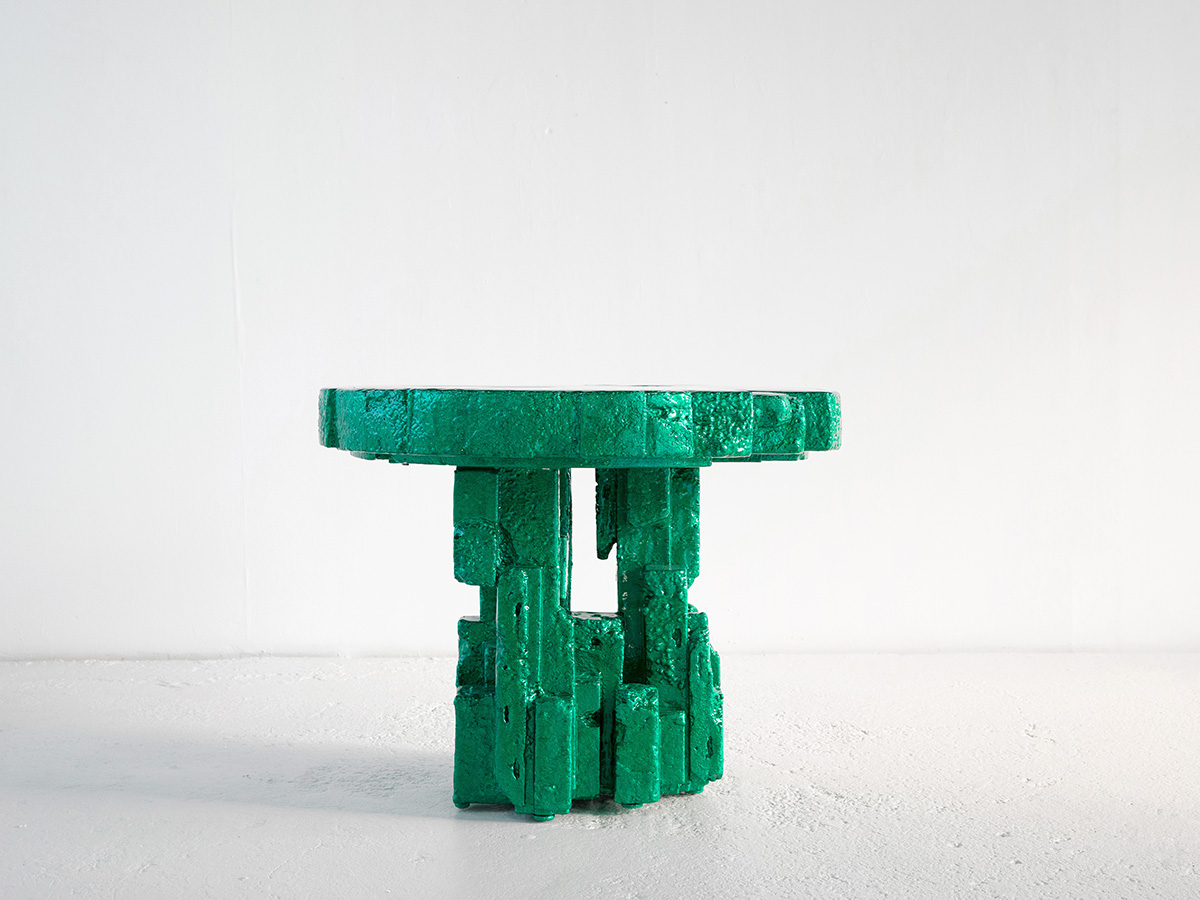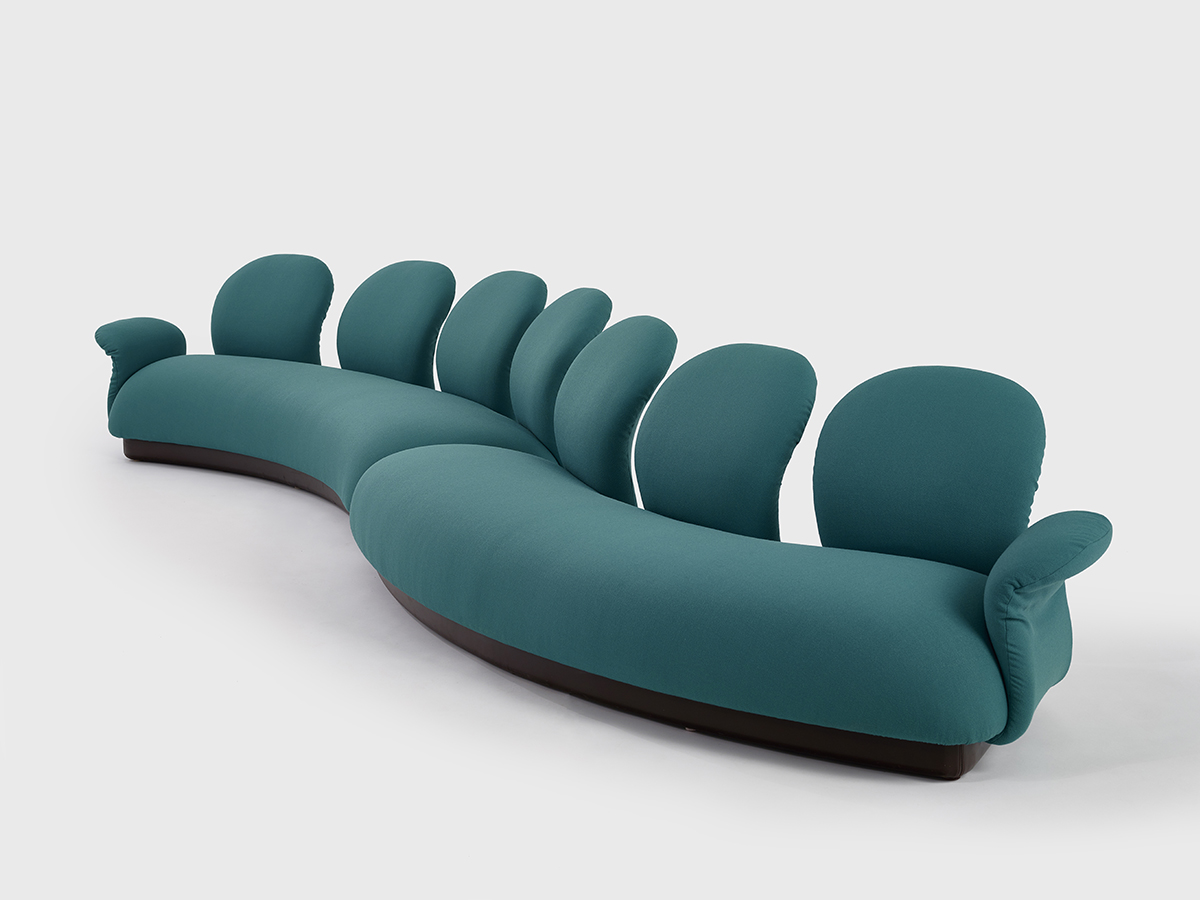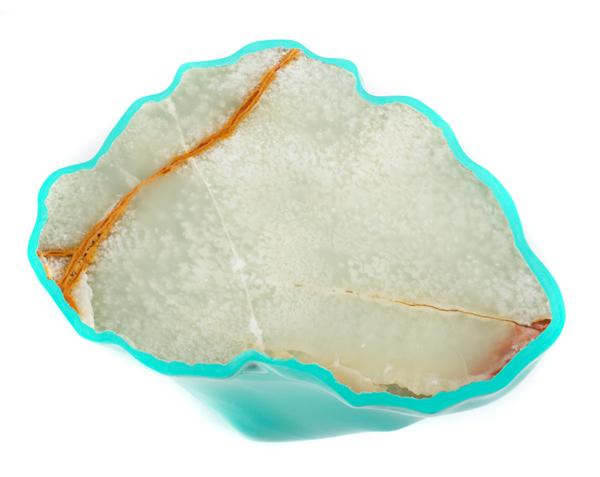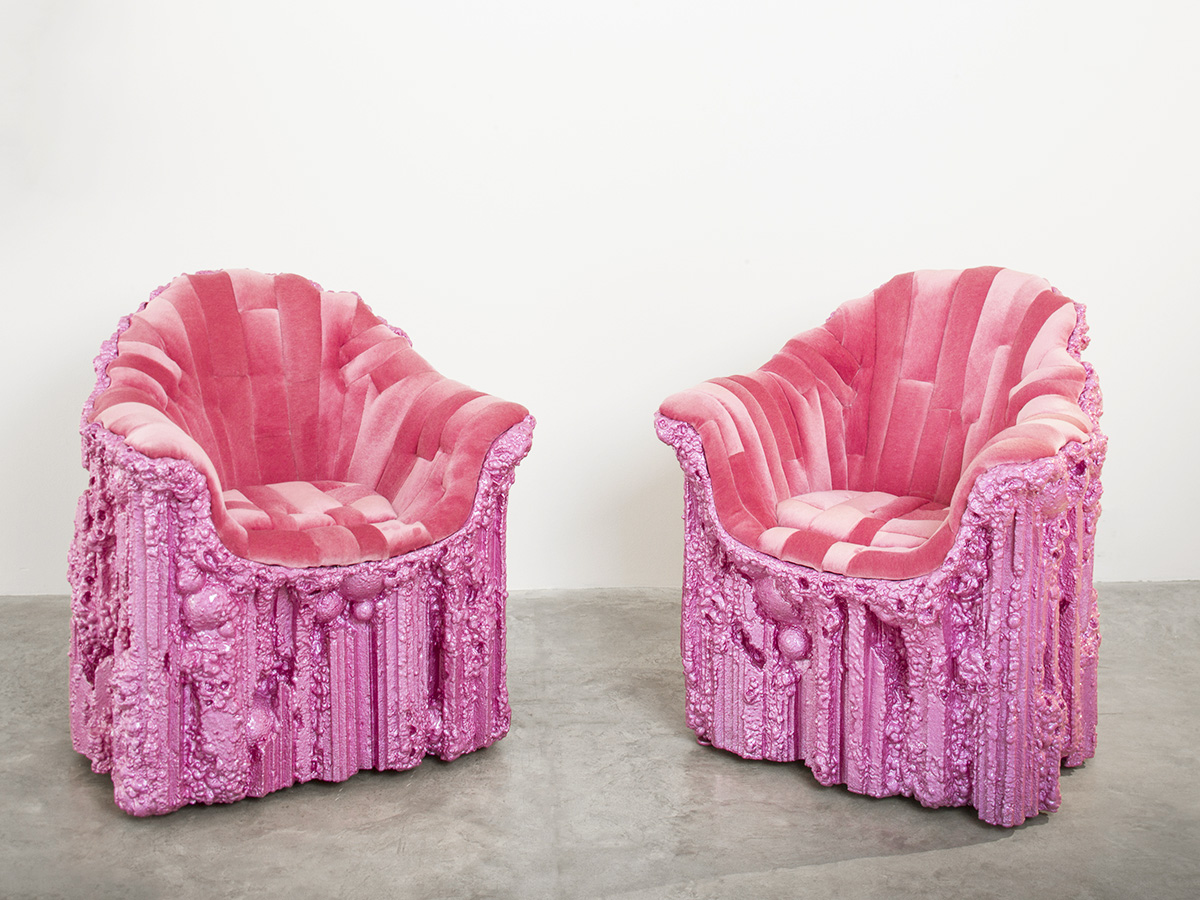
03.07.18
Excerpt: Exhibition
In a New Show, Chris Schanck Debuts Furniture Fit for an Alien King
If you’re familiar with Detroit designer Chris Schanck’s work, you can probably easily conjure an image of it in your mind — primitive yet shiny, lumpen yet somehow slick at the same time. Since 2011, when he was an MFA student at the Cranbrook Academy of Art, Schanck has been developing and refining a technique he calls Alufoil, which is responsible for that shiny, otherworldly aesthetic — it often looks as though Schanck is making executive furniture for an alien king. Last week, he opened a solo show of new work, called “Unhomely,” at Friedman Benda in New York. Taken literally, the title translates to “not ugly,” which might be a nod to the riot of colors Schanck has used to shellack his barnacled works. But the word also has its origins in a Freudian idea about the sense you get from encountering something familiar yet threatening.
It’s relatively deep, fascinating stuff, but as a publication that’s always been most interested in materiality, we were even more intrigued by the intricate description of Schanck’s process in the publication that accompanies the show. “Even when he was in graduate school, he was developing a set of unusual fabrication methods, high on visual impact but extremely labor intensive,” writes Glenn Adamson in the introduction to the text. “He remembers an occasion up at Cranbrook in which his friends gathered to help him make a desk, in exchange for pizza and beer. They were prototyping the bespoke technique he calls ‘Alufoil.’ At that time, he simply built an armature by hand and then surfaced it with store-bought kitchen foil. A coat of resin made the object sturdy, and also brought out the gleam in the aluminum.”
Since then, Schanck has majorly expanded the formal possibilities of his work, with perhaps the most obvious change being the explosion of his palette. Adamson explains: “The first step is the fabrication of a welded steel armature. On to this is packed a collage of hand-shaped foam blocks, and sometimes sticks or other objects. This sculptural substrate is caulked at the seams, then sprayed with a black resin coating. At that point the object is already physically robust — but the work has just begun. More caulk, slightly thinned with water, is massaged into the surface. This modulates the surface so that the foil can be applied, much as a bole might be prepared for gold leaf. Rather than standard kitchen foil, which is thick and unwieldy, he now employs a paper-thin foil taken from the confectionary industry – the material is normally used for chocolate wrappers. In addition to the delicate wrinkly texture this finer material imparts to the work, it is available in a wide range of intense, jewel-tone colors. The foil is applied in small pieces, using customized tools including short-bristled brushes and polishers. Sometimes, selected areas are upholstered, or flocked. Finally the piece receives a further overall coat of clear resin. All the materials involved are inexpensive and widely available, but together they combine to achieve a faux glamour, like non-precious specimens in a Hall of Minerals.”
Have we convinced you yet that this is a must-visit, in-person, have-to-see-it-to-be-believed exhibition? If not, scroll through for some images of Schanck’s incredible new body of work, and stop by Friedman Benda if you’re in the area.
